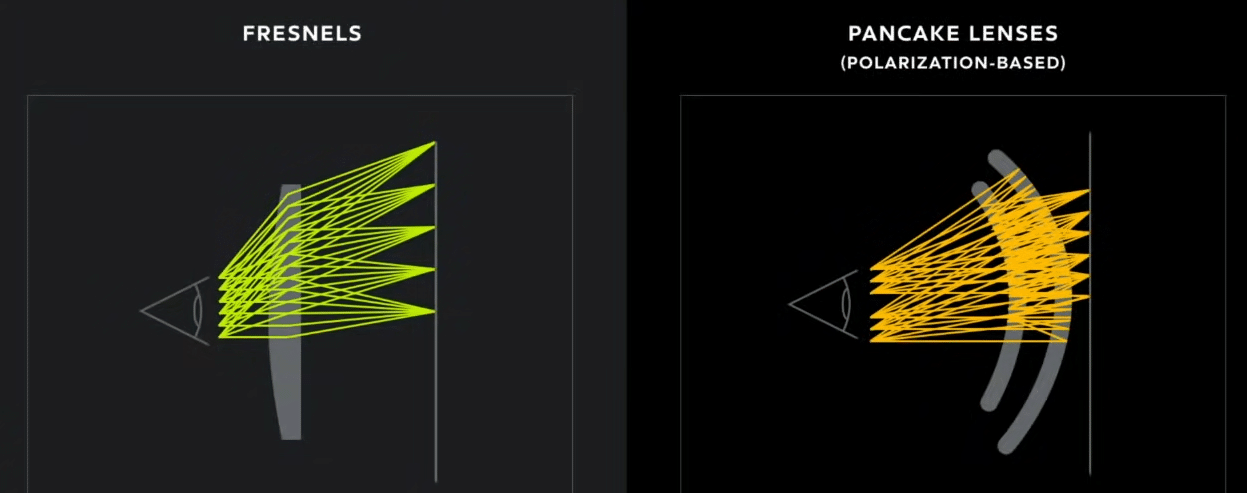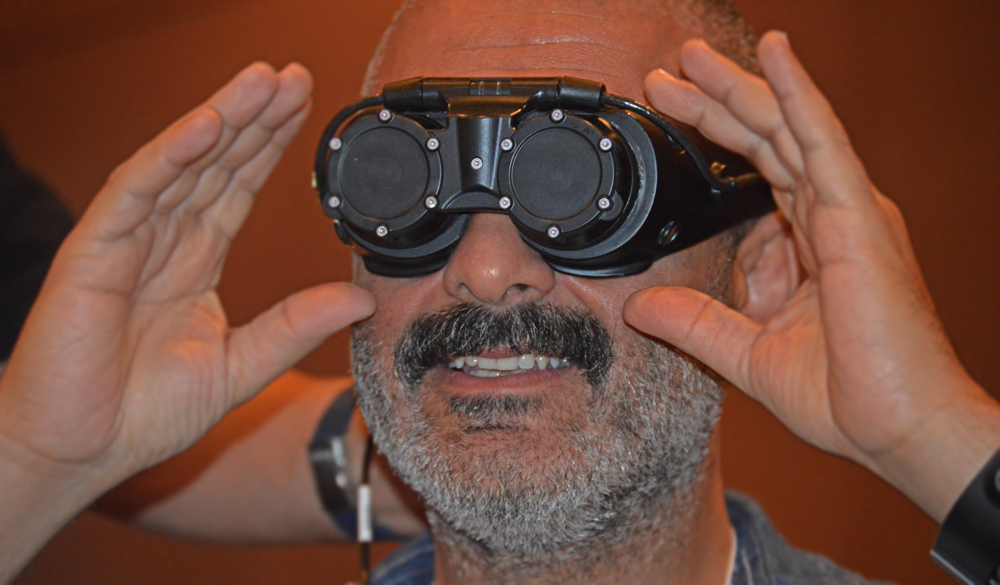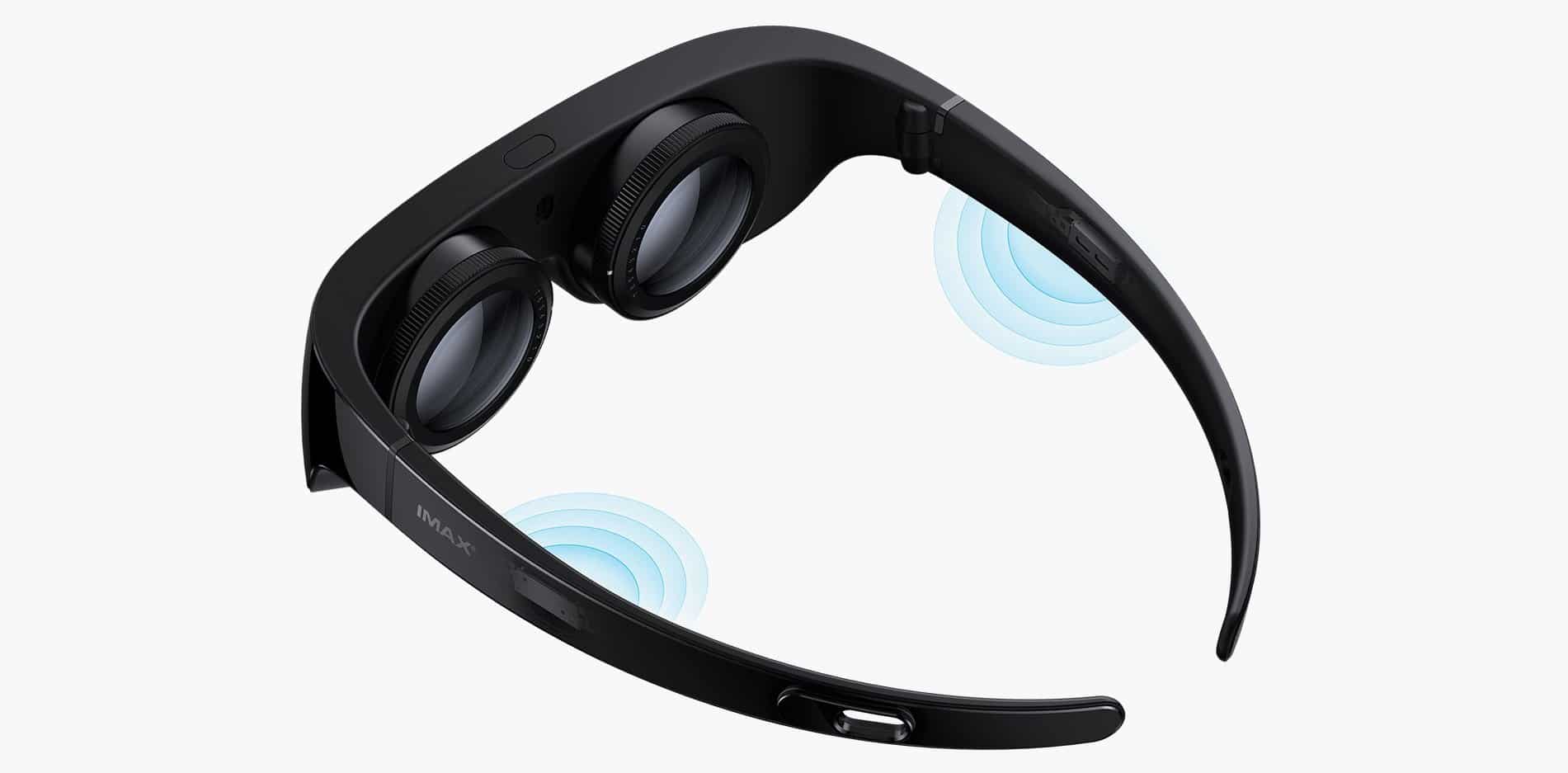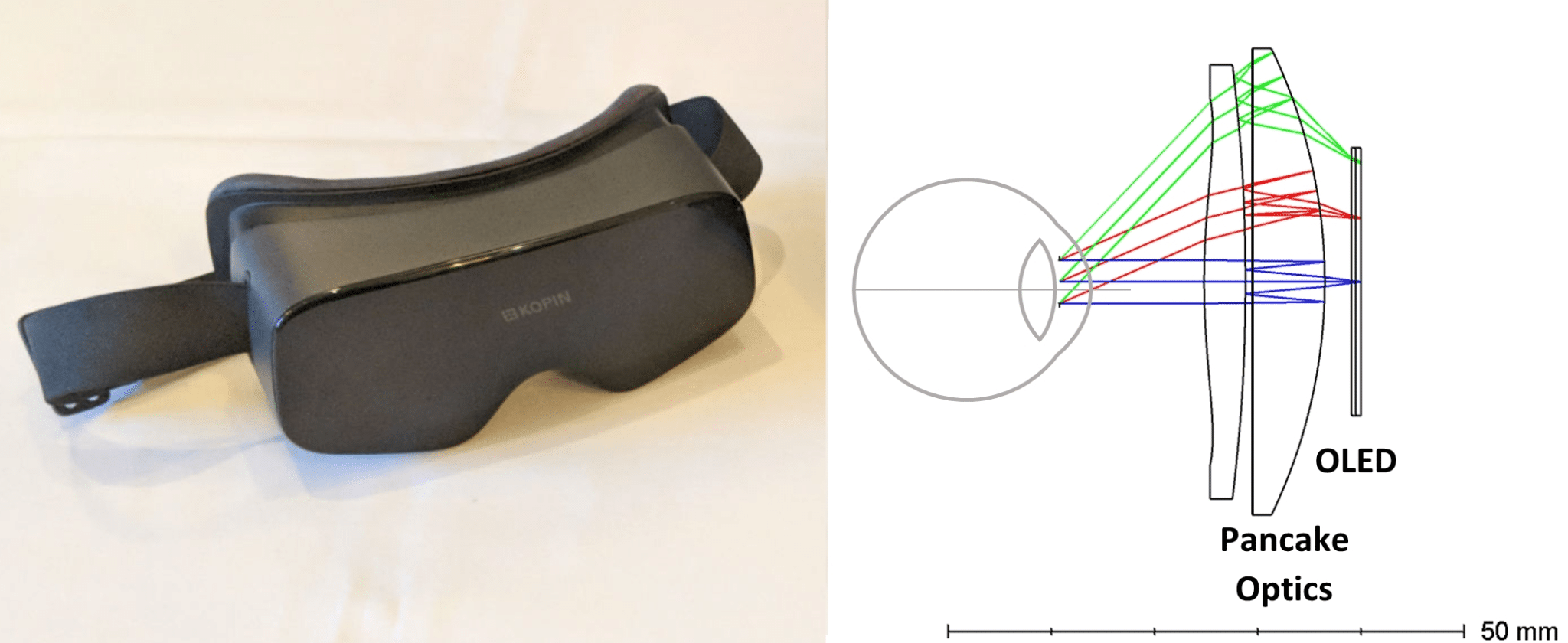Kopin revealed the first all-plastic pancake lenses, which it says can enable much more compact VR headset designs.
“This major breakthrough represents a foundational milestone for the emerging VR markets. Bulky, heavy headsets have been a major barrier to faster consumer adoption for many years,” said Kopin’s CEO and founder John C C Fan.
Kopin Corporation produces OLED microdisplays which are highly suitable for pancake lenses.
Pancake Optics?
The primary driver of the size and bulk of today’s VR is the optical design. Most headsets today use relatively large, thick fresnel lenses to magnify a smartphone-sized display that is sometimes split in two. A large gap between the lenses & display is required. After adding housing, even the most streamlined designs end up over 400 grams.

Pancake lenses have been used in head mounted displays (HMDs) for decades in labs and by militaries. Today, they are seen as a promising path to compact headsets, because the display can be much closer to the lenses and physically smaller. They do present their own challenges, however.

Back in 2015, eMagin showed an extremely compact prototype HMD design using pancake lenses paired with its own microdisplays. Kopin actually showed a similar design with its microdisplays in 2017.
Panasonic and Pico more recently showed concepts of compact headsets using pancake lenses. Huawei launched a product with pancake lenses in China in December 2019, using small LCD panels. Without a tracking system or battery, these headsets end up around 150 grams.

Pancake lenses use multiple elements. To avoid an image “ghosting” effect one of those had to be glass, driving up the weight & cost.
Kopin P95
Kopin’s new pancake lens, called P95, uses two plastic elements instead. Kopin says a “major breakthrough” has almost eliminated the ghosting problem, while delivering “better image quality, much smaller size, lighter weight and lower cost than anything previously available”.

So will all VR headsets move to P95 optics soon? Probably not. Pancake lenses have very low optical efficiency – they block most light, making typical displays look dim and washed out. This can be worked around with very bright displays, but that increases the power requirement, which could be a barrier to battery-powered devices.
Smaller, closeup displays also make it challenging to deliver a wide field of view. Kopin says P95 has a field of view 95° diagonal – around 20% narrower than typical consumer VR today.
Kopin says it filed multiple patents on this new lens design, and says it has one “design-in partner” so far – though didn’t elaborate on specific plans.





























